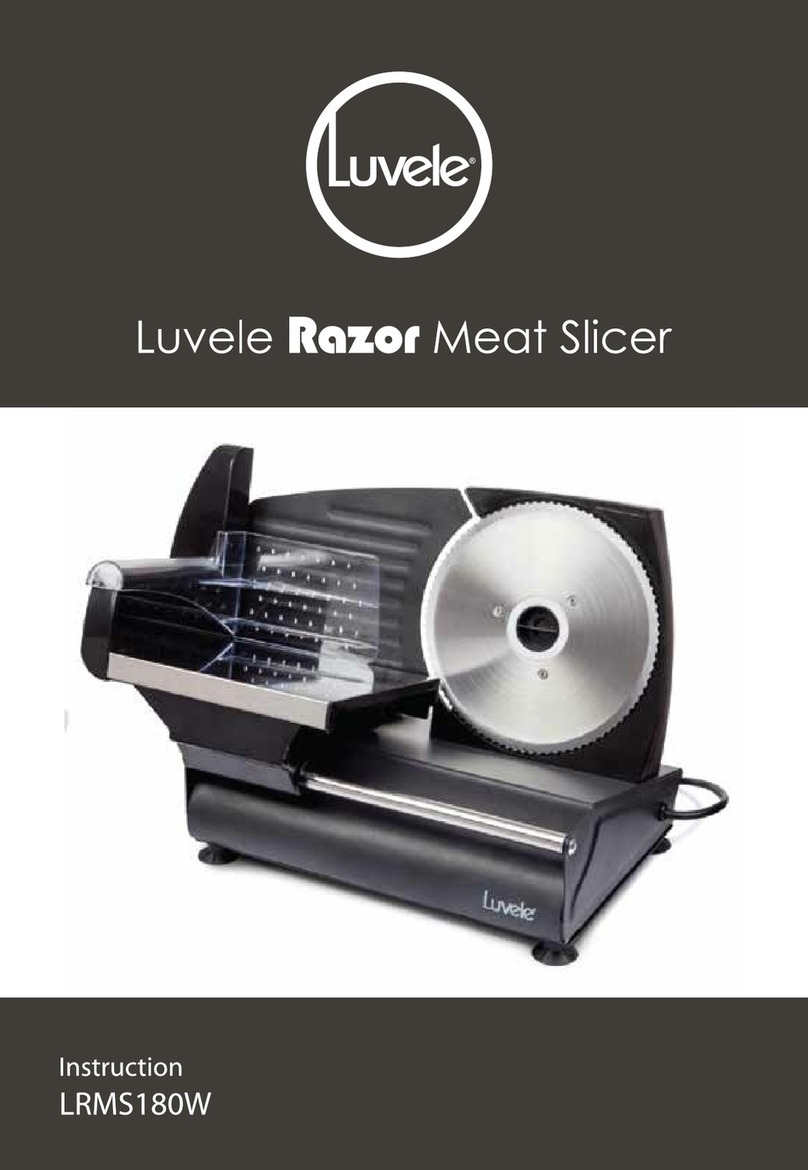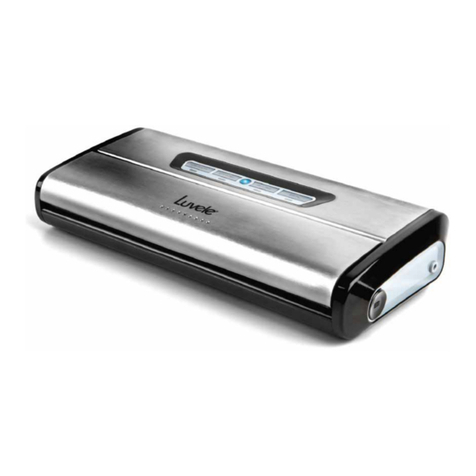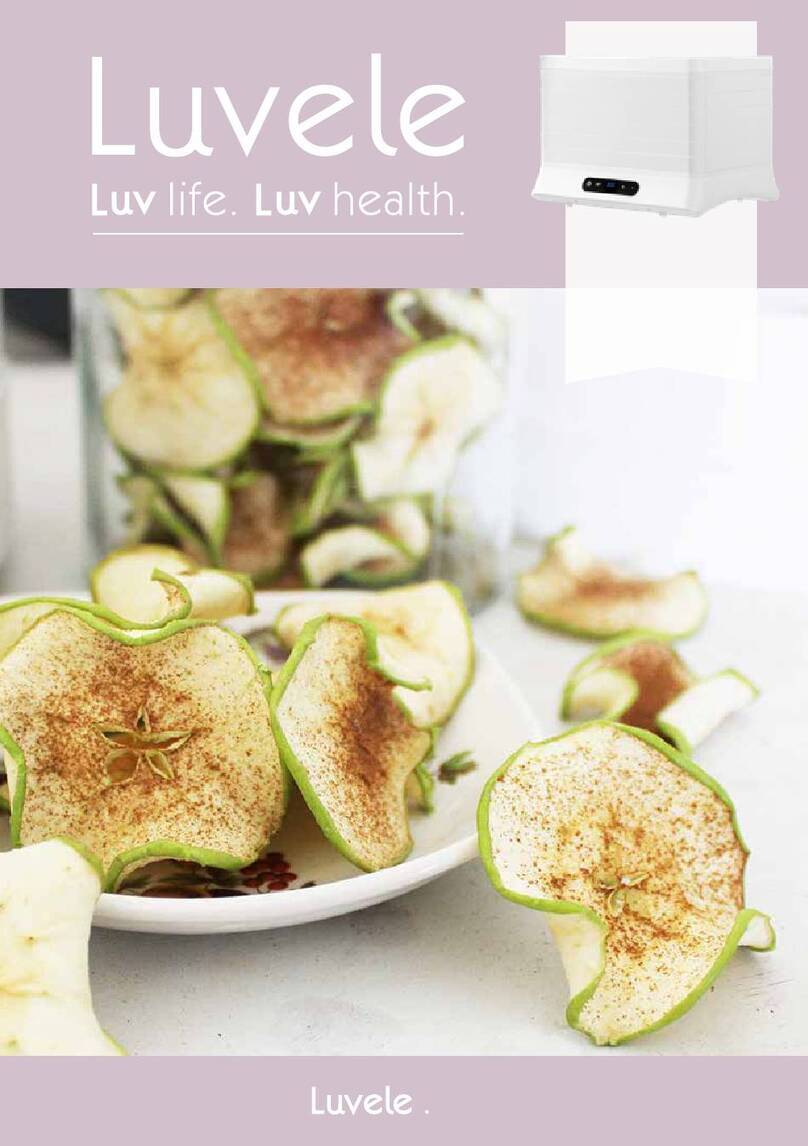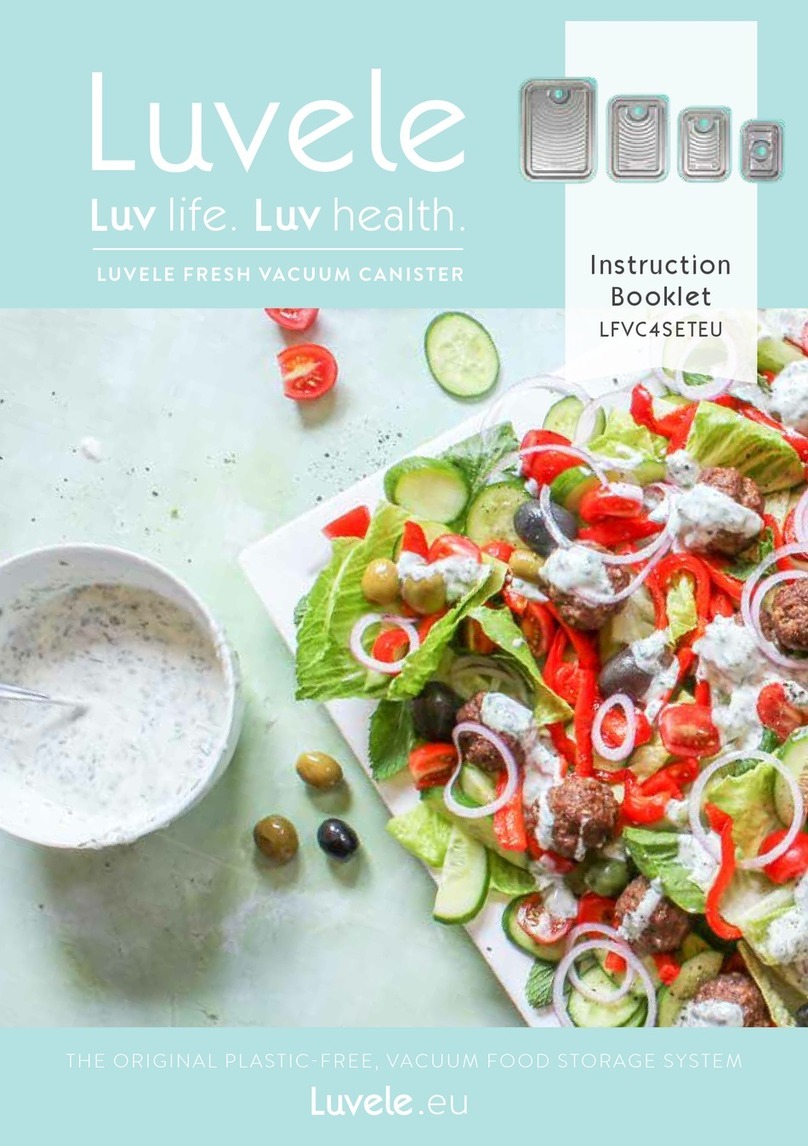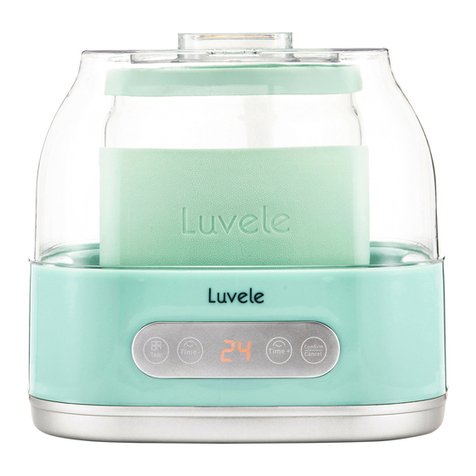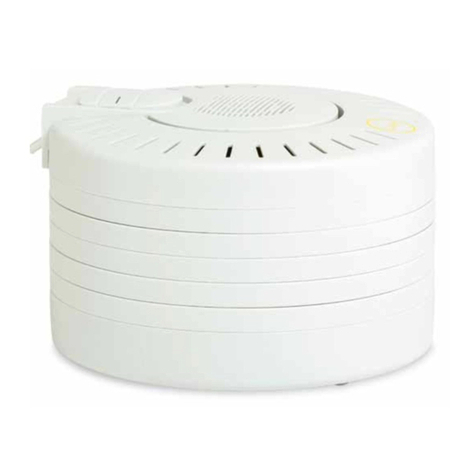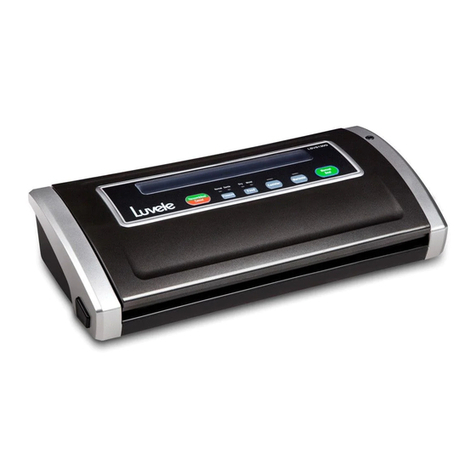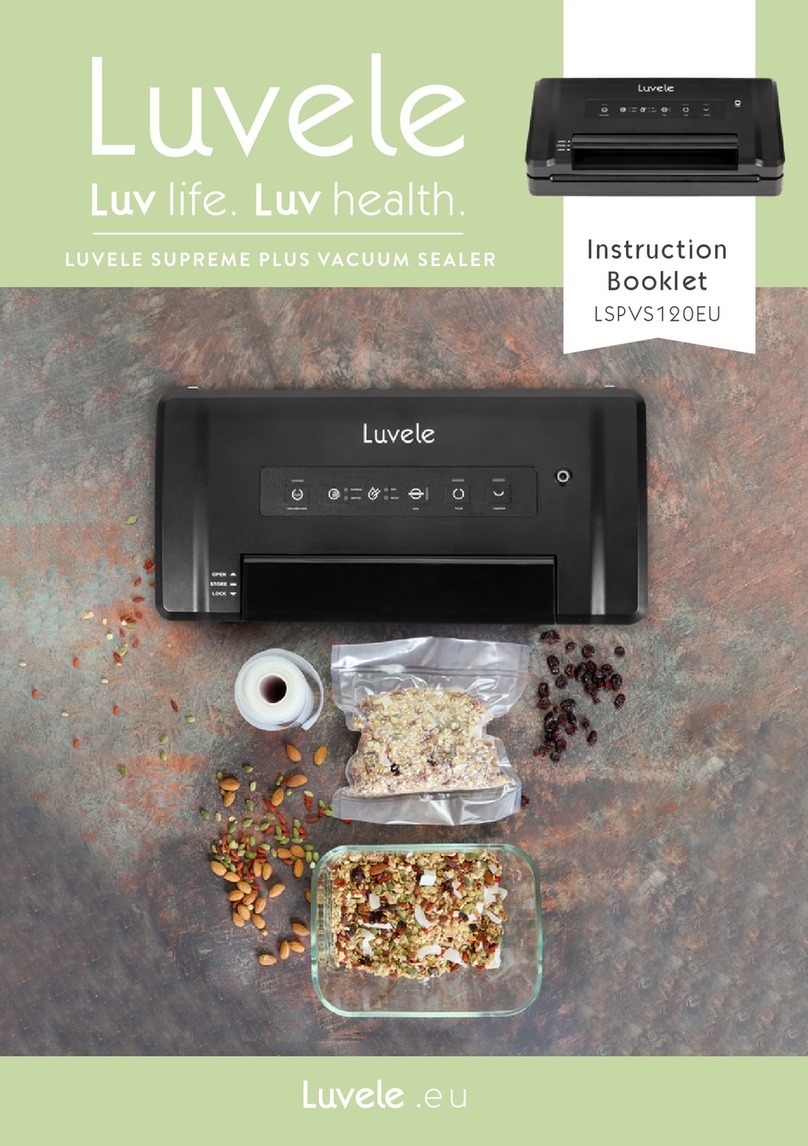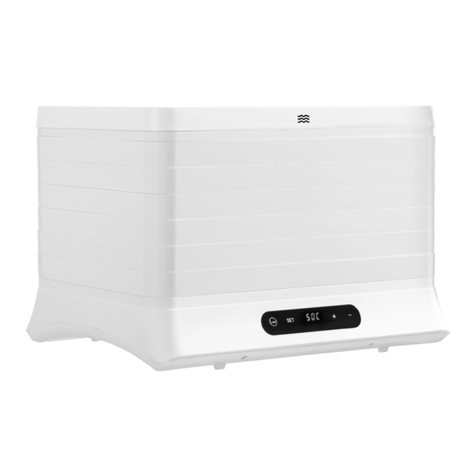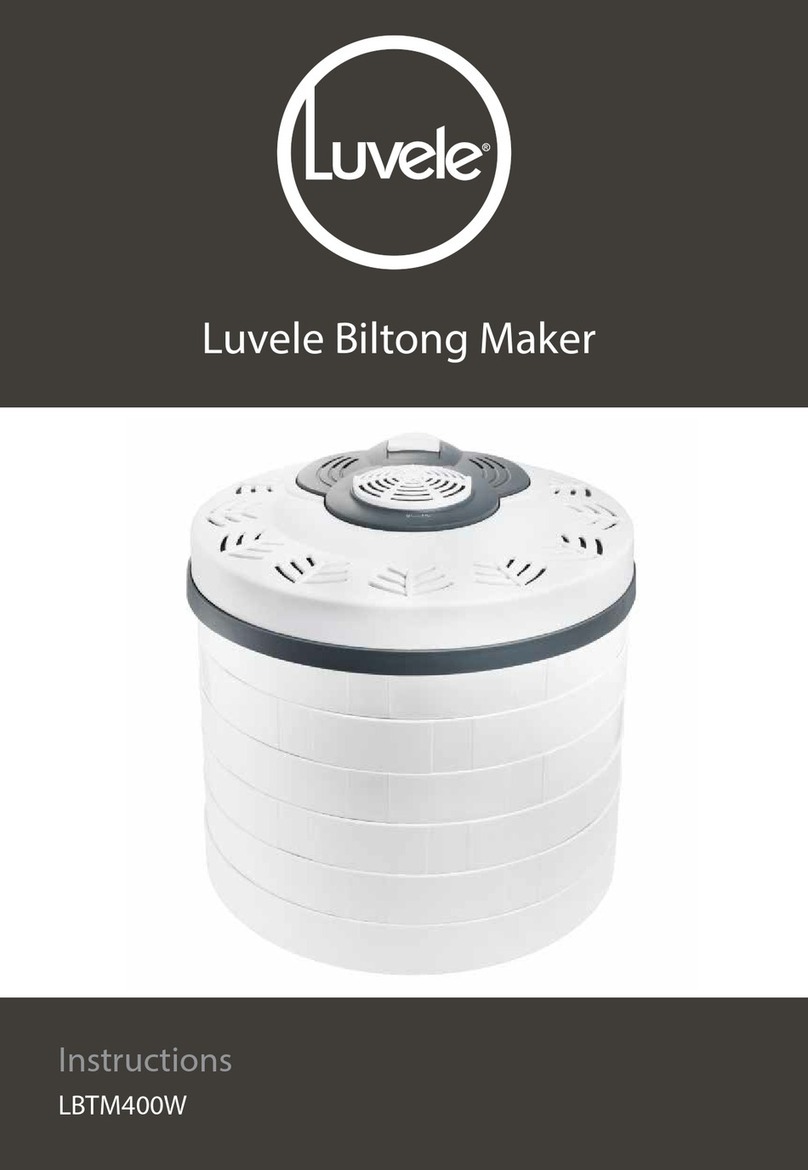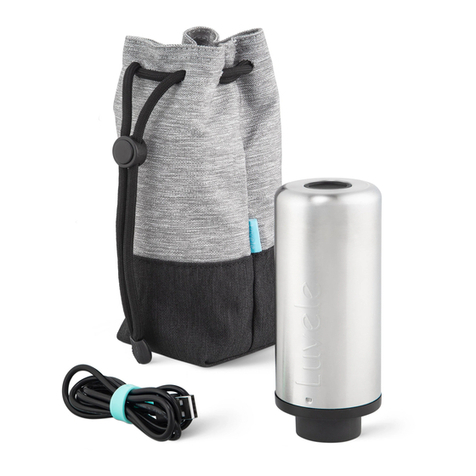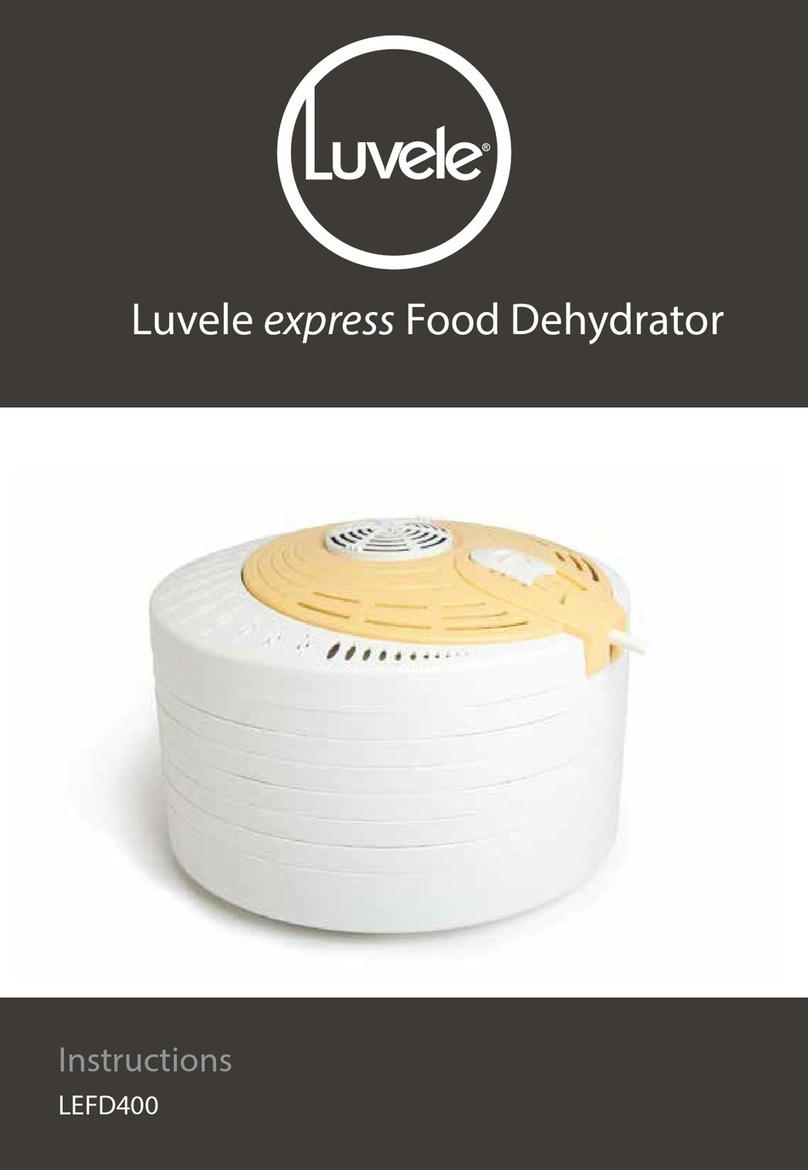
INSTRUCTION | P14
Trouble shoot
INSTRUCTION | P15
Nothing happens when I try to vacuum seal a bag
• Check power cord to see if it is firmly plugged into electrical outlet.
• Examine power cord for any damage.
• See if electrical outlet is functioning by plugging in another appliance.
• Make sure the bag is placed correctly inside vacuum chamber and
beneath the air intake.
• Make sure there is 5cm of flat bag between the top of the item in
the vacuum bag and the dual seal line. The bag needs to be
completely flat on the dual seal line.
Air is not removed from the bag completely
• To seal correctly, the open end of the bag should be resting entirely inside
the vacuum chamber area.
• Check dual seal strip and the foam gaskets for debris and position.
Make sure there is no breaking or distortion of the foam gaskets on both
the cover and on the base of the vacuum chamber. Wipe clean and smooth
them back into place if needed.
• Vacuum bag may have a leak. To test, seal the bag with some air in it,
submerge in water, and apply pressure. Bubbles indicate a leak. Reseal or
use another bag.
• Use only the specified vacuum bag with vacuum channels provided by
Luvele.
• Leaks along the seal can be caused by wrinkles, debris crumbs, grease or
liquids. Reopen bag, wipe the top inside of the bag and smooth it out along
the sealing strip before resealing.
• There is a vacuum pressure sensor built in this machine. The machine will
not turn to seal automatically if the vacuum pressure inside the bag is not
able to reach the predetermined vacuum pressure. Check sealing strip and
the foam gasket beneath the lid for debris and correct position. Wipe clean
and smooth them back into place, and try again.
The bag melts
• Should the dual seal strip overheat and melt the bag, it may be necessary to
lift the lid and allow seal strip to cool for a few minutes.
Trouble shoot
Air has re-entered into the bag after being sealed
• Leaks along the seal can be caused by wrinkles, debris crumbs, grease or
liquids. Reopen bag, wipe the top inside of the bag and smooth it out along
the sealing strip before resealing.
• The release of natural gases or fermentation from foods such as fresh fruits
and vegetables may occur. Most vegetables require blanching prior to
vacuum packaging.
• Open bag if you think food has begun to spoil, and discard food. Lack of
refrigerator or fluctuating temperatures in the refrigerator can cause food to
spoil. If food is not spoiled then consume food immediately.
• Check the bag for a puncture or hole which may have released the vacuum.
Do not vacuum package hard items with sharp points like bones or shell.
Cushion sharp edges in the contents of the bag with paper towels.
Vacuum Sealing moist or liquid items
Many troubles faced when vacuum sealing are from trying to seal moist or liquid
items. Moist items are more dicult to vacuum seal because the moisture in the
bag naturally wants to get sucked towards the seal area where the vacuuming is
taking place. If the moisture reaches the seal line the vacuum sealer will
automatically start to seal the item. This can happen while there is still air in the
bag and can give the appearance that the vacuum sealer is not working correctly.
Following are some tips to overcome this:
• If attempting to seal moist meats like fish and chicken, it is recommended
that you cut you vacuum bag with extra length, so there is room for the
moisture to move during the vacuuming process and so the moisture does
not reach the seal line. 15cm should be enough length from the end of the
meat item to the seal area.
• Another solution to sealing high moisture items is to wrap them in plastic
wrap then place them in the vacuum bag to be vacuum sealed. This should
prevent most of the liquid being sucked towards the seal area.
• If placing large moist items in a bag like a whole fish, it is very important you
do not leave any moisture near the seal area. Once you have placed this
type of item in the bag use some dry paper towel to wipe down the seal area
for a successful outcome.
• Liquid items like soups, stocks, gravy etc should all be frozen before
attempting to seal.
